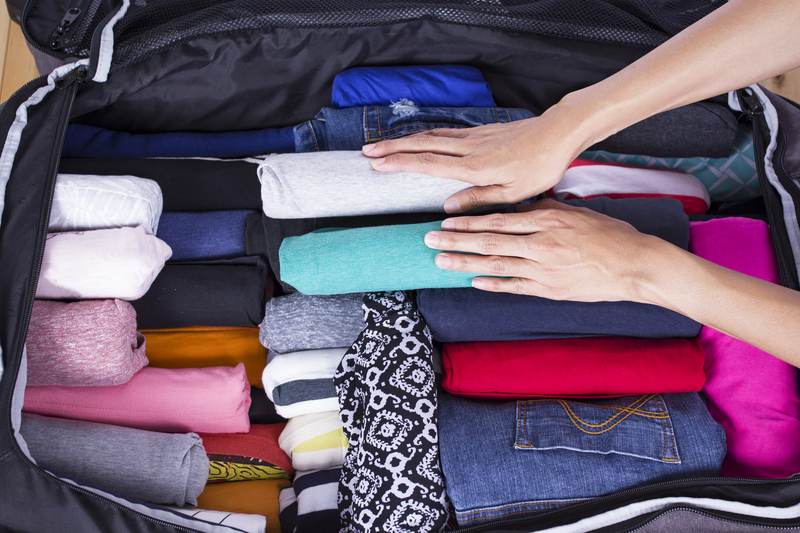Your Step-by-Step Plan for Moving Your Bed and Mattress
Moving your bed and mattress can often be the most daunting part of relocating. These items are bulky, heavy, and require extra care during a move to prevent damages or injuries. Whether you're preparing for a cross-town move or shifting your bedroom furniture to a different room, following the right procedure is crucial for a smooth, hassle-free experience. This comprehensive guide provides a step-by-step plan for moving your bed and mattress securely, efficiently, and with minimal stress.
Why Focus on Moving Beds and Mattresses?
Unlike boxes and smaller furniture, beds and mattresses present unique challenges. A bed frame can be intricate and difficult to disassemble, while mattresses are often heavy, unwieldy, and prone to stains or tears. Proper planning not only protects your investment but also ensures comfort and sleep quality at your new residence. Understanding how to move these bedroom essentials is key to an overall successful move.

Ultimate Step-by-Step Plan for Moving Your Bed and Mattress
1. Gather the Right Tools and Supplies
Before you begin, ensure you have all the necessary moving supplies on hand. This will save time and prevent unnecessary frustration later.
- Mattress bag or plastic cover: To shield your mattress from dirt, moisture, and damage.
- Mover's blankets or padding: To protect the bed frame and headboard from scratches.
- Basic toolkit: Wrenches, screwdrivers, pliers, and an Allen key for disassembling your bed frame.
- Tape & zip ties: For securing loose parts and keeping bolts or screws together.
- Furniture dolly or hand truck: To move the mattress and bed components with less strain.
- Labels and markers: For organizing and identifying parts during reassembly.
- Plastic bags or small boxes: To hold hardware safely.
2. Remove Bedding and Accessories
Begin your bed and mattress moving process by stripping off all bedding. This includes:
- Sheets
- Comforters
- Pillows
- Blankets
- Mattress toppers or pads
Wash and pack these items separately in sealed bags or boxes to keep them clean and organized. Use this opportunity to sort and declutter, donating or discarding anything you no longer need.
3. Disassemble Your Bed Frame
Disassembling your bed frame will make moving much more manageable. Follow these tips:
- Consult the manual (if available) for guidance on breaking down your specific frame.
- Remove the mattress and box spring before tackling the frame.
- Unscrew or unbolt headboards, footboards, and side rails. Use marked bags for each set of hardware.
- Label components clearly with sticky notes or tape to identify right/left or top/bottom parts.
- Take photos during the disassembly for easy reference during reassembly.
Pro tip: If your bed has built-in storage drawers, remove these separately and secure them with moving blankets.
4. Wrap and Protect Each Component
Proper protection is essential to avoid scratches, dents, or soiled upholstery during your move. Here's how:
- Bed frame pieces: Wrap each part with mover's blankets or bubble wrap. Use packing tape to keep the wrap securely in place--without letting it stick directly to the furniture finish.
- Headboard and footboard: Give extra padding at corners and edges, which are most vulnerable to chipping.
- Mattress: Slide your mattress into a plastic mattress bag. Seal it completely with heavy-duty tape to block out moisture, dirt, or pests.
Never skip this step, especially if you plan to store your mattress and bed for any length of time before setting them up again.
5. Moving the Mattress: Lifting and Transport Techniques
Mattresses can be surprisingly heavy and floppy. Here's how to handle this crucial part of your mattress and bed moving strategy safely:
- Enlist a friend or moving helper; never try to carry a mattress alone to avoid injuries.
- Hold the mattress on its side, which makes it easier to maneuver through doorways and tight spaces.
- Use a furniture dolly for larger or memory foam mattresses, which can be more unwieldy.
- Keep your path clear of obstacles before moving any large items.
- Secure the mattress inside the moving vehicle with straps to prevent shifting during transport.
Note: Never fold or bend a mattress unless specifically designed to do so--this can damage internal springs or memory foam.
6. Transporting the Bed Frame
Once each piece is wrapped, it's time to move the bed frame to your vehicle:
- Carry flat pieces like rails and slats standing upright or stacked to one side of the moving truck.
- Secure headboards and footboards with moving straps or position them so they won't shift or tip.
- Group hardware with its respective frame components to avoid confusion.
- Use padding between stacked items to prevent abrasion.
If your bed frame is made of solid wood or an especially heavy material, consider hiring professional movers for this step.
7. Loading and Securing Your Mattress and Bed in the Truck
Proper loading ensures your bed and mattress arrive undamaged. Follow these expert tips:
- Load the mattress last so it's the first thing you unload at your new home.
- Keep the mattress upright along the wall of the vehicle--not laid flat on top of other items, which can alter its shape.
- Position bed frame parts securely to prevent them from shifting or falling during transit.
- If moving with other furniture, separate the mattress with padding or blankets to avoid contact with sharp edges.
8. Unloading and Reassembly at Your New Home
Once you've reached your destination, it's time to reassemble your bed and set up your mattress:
- Unload the mattress first and check for any damage before removing the protective bag.
- Unwrap each frame component and organize them according to your labels or photos.
- Follow the assembly instructions (or refer to your photos) to rebuild the bed frame.
- Secure all bolts and screws tightly; a loose frame can squeak or wobble.
- Lift your mattress onto the frame--never drag, which can tear the cover or damage the underside.
- Let the mattress air for a few hours if possible before making the bed, especially if it's memory foam that may have been compressed.
Special Considerations When Moving Your Bed and Mattress
Moving with a Box Spring
If your bed setup includes a box spring, use a special bag or wrap it in moving blankets. Like the mattress, transport the box spring upright and avoid placing heavy objects on top.
Dealing with Adjustable or Platform Beds
Adjustable beds often have electronic components. Unplug all cords, remove batteries, and detach the motor if possible. Pack electronics separately and protect the remote control. Platform beds may not disassemble completely, so be sure to measure doorways ahead of time.
Tips for Long-Distance Mattress Moves
- Consider using a professional mattress moving service for long hauls or for king-size beds.
- Climate-controlled trucks are ideal for memory foam or latex mattresses.
- If storing a mattress for any period, lay it flat in a clean, dry space with airflow around it.
Common Mistakes to Avoid When Moving Beds and Mattresses
- Skipping the protection: Moving a mattress without a bag or cover can lead to irreversible staining or tearing.
- Losing hardware: Small screws and components easily get lost; always keep them labeled and together.
- Assuming one person can handle the job: Beds, mattresses, and especially box springs require teamwork.
- Not measuring hallways and doorways: Take measurements before starting to ensure everything fits at both locations.
- Dragging instead of carrying: Dragging items risks damage to both the furniture and your floors.
Should You Hire Professional Bed and Mattress Movers?
While moving a bed frame and mattress is possible for most DIY enthusiasts, some circumstances may call for professional moving help:
- If your mattress is especially heavy (latex, hybrid, or oversized models).
- You live in a multi-floor building or there are stairs involved.
- The bed frame is antique, expensive, or difficult to disassemble.
- You have special health, mobility, or time constraints.
Professional movers bring the experience and equipment to safeguard your investment, and many offer white-glove assembly services for a truly hassle-free transition.
How to Keep Your Mattress in Top Shape During a Move
Protecting your mattress during relocation ensures you'll enjoy a good night's sleep in your new home. Here's how:
- Always use a waterproof, tear-resistant mattress bag.
- Vacuum your mattress before packing to remove dust or mites.
- Allow the mattress to breathe upon arrival; this also helps release any packing odors.
- Never transport a mattress in rain or snow without adequate protection.
- Avoid folding or cramming to fit through doors--measure first!
Eco-Friendly Tips for Moving Beds and Mattresses
- Use reusable moving blankets instead of single-use plastics whenever possible.
- Consider donating old bedding or frames to local charities before your move.
- Recycle mattress bags responsibly after use.

FAQs About Moving Your Bed and Mattress
How do I move a memory foam mattress?
Memory foam mattresses are heavier and more flexible than traditional innerspring models. Always move them upright, use a sturdy mattress bag, and avoid bending or folding them to prevent cracks in the foam layer.
Can I move a king-size mattress by myself?
It's not recommended. King-size mattresses are cumbersome and can cause injury or structural damage if handled incorrectly. Always get help or hire professional mattress movers.
Should I vacuum my mattress before moving?
Yes, vacuuming your mattress helps remove dust, allergens, and debris before it's sealed in a bag for transport.
How long can I store my mattress upright?
Most manufacturers recommend storing mattresses flat for prolonged periods (over a few days). For short moves, upright storage is fine if properly supported.
Conclusion: Master Your Bed and Mattress Relocation
Preparing and executing a step-by-step plan for moving your bed and mattress is essential to protect your investment and ensure a comfortable transition into your new space. With careful planning, the right materials, and some teamwork, your bed and mattress will arrive clean, undamaged, and ready for a restful night's sleep. Bookmark this comprehensive guide and refer back to it for a stress-free, organized move every time!
If you found this ultimate guide helpful, share it with others preparing for their own move. For more moving tips and in-depth advice, explore our additional resources below!



